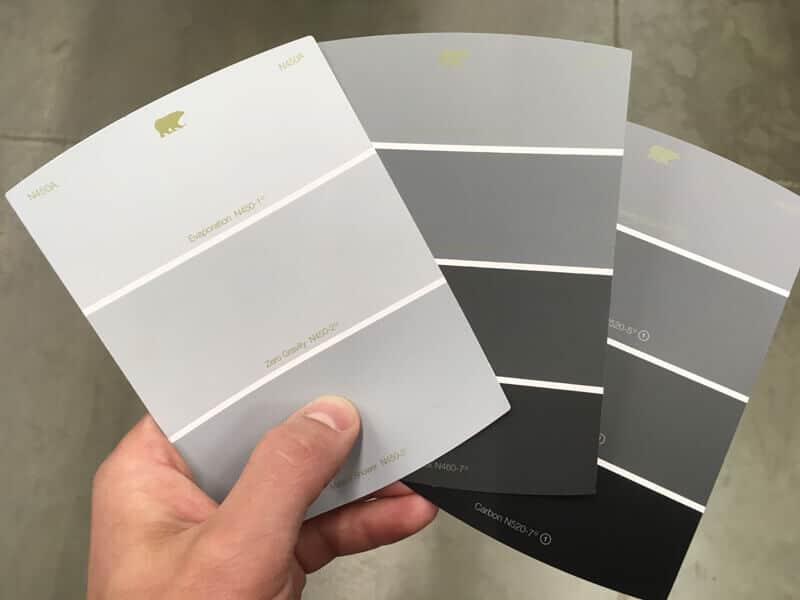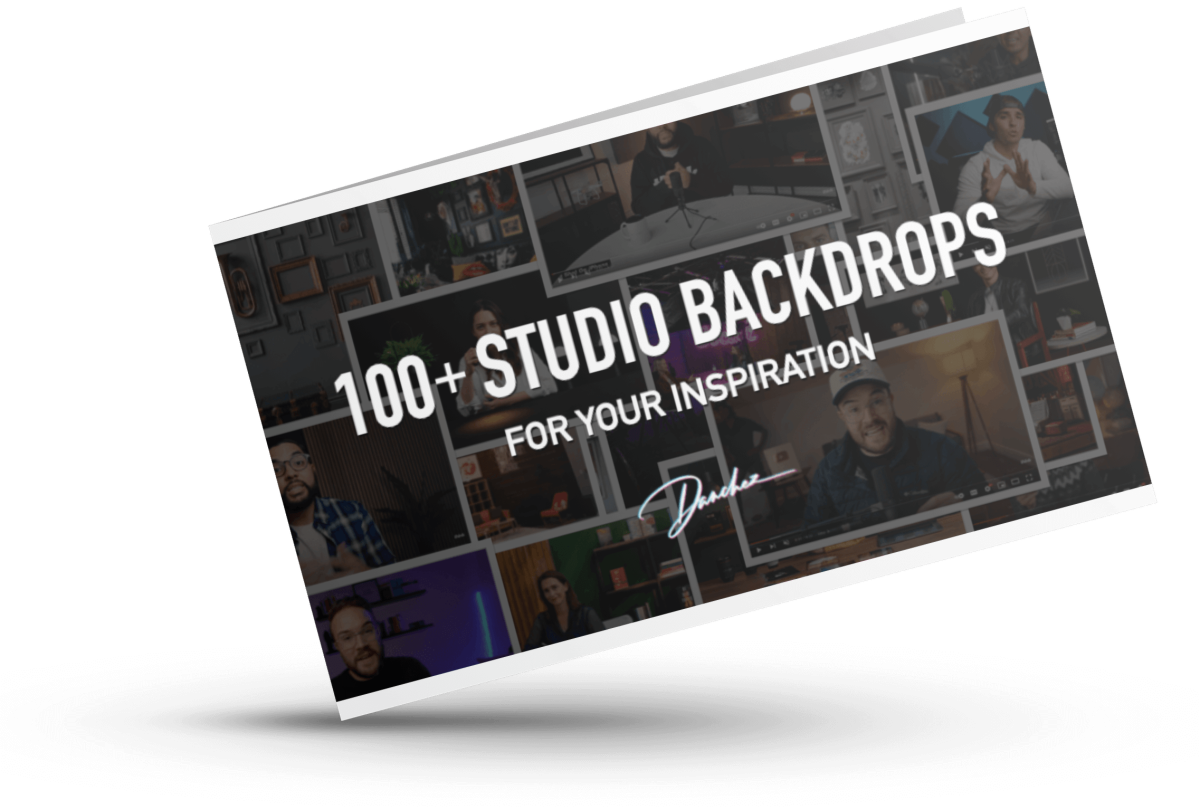After choosing a location for my home video studio I wondered for a while what colors I should paint the walls. I wasn’t planning on hanging a backdrop curtain since the room was small and I planned on using that section just for shooting. There wasn’t really a clear answer, so I did some research and talked to our media director who runs our LEAD Media program where I work. This post catalogs what I learned.
What color should you paint your video or photography studio walls? Most photography or video studio walls are painted white, black, or some shade of grey in between. These neutral colors prevent stray color from accidentally bouncing off the wall into the area you are shooting. If it is a permanent set though, any color could be used to portray the desired theme, mood, or story.
There are some implications for each color you choose so below I wrote a quick guide to help you choose wisely to avoid having to repaint later. First, let’s start with why neutral walls are preferred.
Note Regarding Photo Illustrations: The photos I choose to illustrate the differences between wall colors can be achieved with any of the colored walls by professionals and are an exaggeration to illustrate very minor differences.
White Studio Walls
The most popular choice I have seen for studio walls is white, especially for photographers. It is the brightest color that allows the most light to bounce around, so if you want extra light, go with white. This can be handy for a studio if your lights are not as bright as you would like or if you generally shoot photos or video that is bright and airy. White is also easier to keep clean than black.
Having extra light bouncing around adds more “fill” light in the area you are shooting so that shadows will not be as intense as they could be. This is what creates a lighter and more “airy” feel to the photos or video footage than darker walls would produce.
Some reasons why you would choose white walls
- White walls act as reflectors adding more fill light to every shoot
- With extra fill light, your studio lights don’t need to be as intense
- you plan on using the walls to reflect light and/or color intentionally
One reason some people avoid white studio walls is to avoid the sterile look and feel of the room. Some have even mentioned it feeling like a hospital and would prefer one of the other colors below if they have to spend a lot of time in the studio.





Black Studio Walls
Black is the next most popular color for the exact opposite reason that white is the first. With black studio walls, the least amount of light is bouncing around to fall on the subject giving you the highest level of control with your lighting. It’s the reason why so many professional media people wear black and why pro studio gear typically comes in black.
Stylistically, black walls make it easier to be more dramatic with lighting and will create darker shadows since less light is bouncing off the walls to fill them. You have to consider if this is a style you want or if taking more time on lighting to make each shoot perfect is ok with you.
Personally, I decided to go with black walls for my DIY home video studio. I do not plan on using a roller backdrop but using the walls as part of the set itself. I have always appreciated the look and feel of a dark background with a well-lit subject. In my opinion, an all black background also looks more professional from the all-white background, but that is only a consideration if you are using your studio walls as the backdrop like I am.
Reasons why you might choose black studio walls:
- to have full control of your lighting
- no stray light means more intense shadows for a more “moody” feel
- they make for a great professional backdrop by themselves




Grey Studio Walls
Still, many studios prefer grey walls because they are the most neutral. They don’t block all light, nor do they reflect the most light, making them a compromise between the white and black walls. Grey tends to be aesthetically pleasing if you are working in the studio often and is currently a popular interior design choice. Which shade you choose is entirely up to your preference.
Get The Audience Growth Checklist 🚀
Your content deserves an audience. Find out how to get the reach it deserves.
A light grey is preferred by video editors so if you are editing video (or photography for that matter) the most neutral color for your eyes to make the best editing choices is 20% black.

Here are a few reasons why you may want to choose grey for your studio walls:
- have some, but limited, fill light to soften your photos or videos.
- grey walls are more stylish and make a more attractive studio
- studios with grey walls can double for a great editing studio as well


In Addition to Painting
Of course, many studios will bring in color after the walls have been painted, like the paper rolls in the photo below. A studio is typically a very flexible space that can account for a wide variety of types of content. They have practical design layouts that are made for work rather than aesthetics. Though some certainly enjoy the aesthetic of a production studio.

Other Colors & When to Choose Them
Most studios choose one of the neutral colors listed above so that they can be flexible with space, bringing in any color they need for a project without the colors of the walls affecting those colors. Still, there are scenarios when you may want to consider painting your room another color.
Here are a few color alternatives and why you might choose them.
Green Screen Studios
You would want to consider this if the majority of your projects include video special effects. Green screens (like the one seen in the photo above) allow video editors to replace the green with any background they would like in post-production. There is a very particular green that is used for this.
Any Color Works for Permanent Studio Sets
You may want to paint the studio walls with the colors that best represent the permanent set you have in place. This isn’t limited to color though, as it could include textures, wallpapers, or any number of wall decor to set a mood or help tell the story.
You may want to pursue this path if you are creating permanent photography studio room sets where clients come in to take the same type of photo every time. This is popular in countries like South Korea where they have a dozen rooms staged with popular backgrounds or scenes and even provide stylistic clothing for each room.
for video, a set could be developed to shoot the same show over a long period of time. An interview booth, talk show, or YouTube channel may have a more permanent look and feel that doesn’t require the flexibility of the more neutral colors.
Related Questions
Where should I shoot my videos or photographs? Choose a location that brings context to the story, theme, or mood you are trying to capture in your photo or video. For a full breakdown of where to shoot video specifically, check out this handy guide.
Should I use warm tungsten lights or cool daylight balanced lights for my studio? Daylight balanced lights are the best choice for studio lights because they are more neutral and can more easily be covered with a gel cover to make them warmer if desired, while tungsten lights are more difficult to make cooler.



